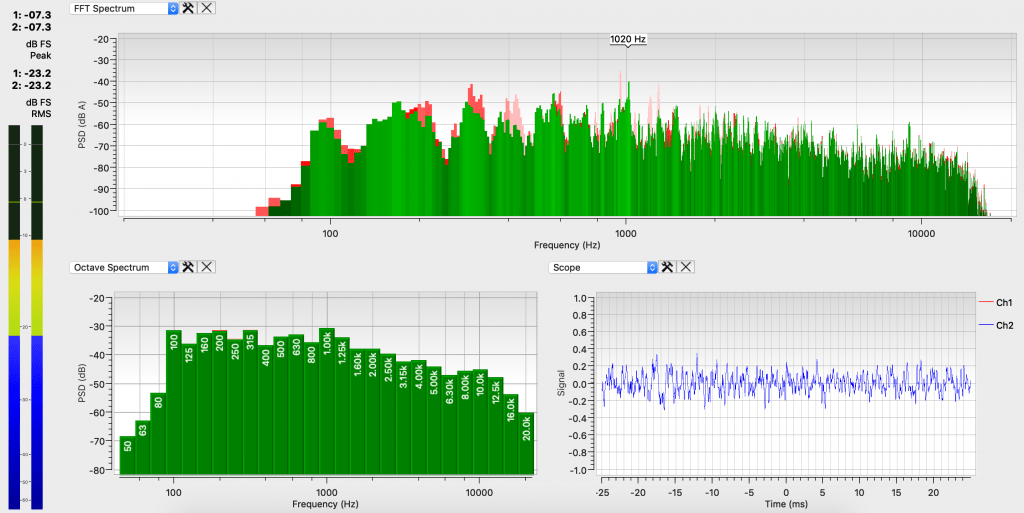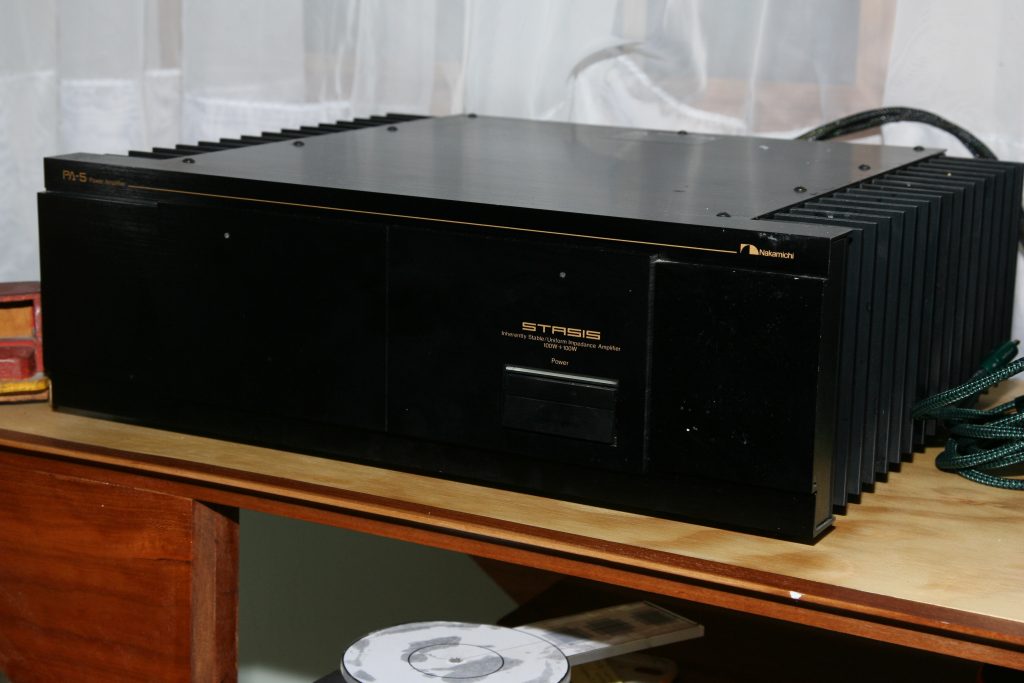There are a lot of tools available to measure just about everything you can think, audio is no different. When testing audio gear we can use oscilloscopes, calibrated microphones, SPL meters and more. These tools are especially helpful to the engineers building the components to make sure the work as designed. They are also used by reviewers to make sure they work as advertised more or less. What do all these measurements mean and do we really need them. Lets get into some audio measurements

Most Common Measurement types:
The most common measurements you will see in reviews are listed below, we will get into them a little bit without going to deep into it.
- Frequency Response:
- the frequency response is the over range of frequency a particular piece of gear can put out at a constant level. When talking about speakers it is more the range they are over all capable of reproducing.
- Total Harmonic Distortion:
- Music material contains distinct tones, and some kinds of distortion involve spurious tones at double or triple the frequencies of those tones. This is what is called harmonic distortion, generally speaking you most manufactures will design their electronics to have less than 1% THD.
- Power or Wattage:
- often listed as RMS (Root Mean Square) or Peak level. RMS is more important is this is the level at which sound is presented at the highest wattage with the least amount of distortion, or more specifically a specified amount of distortion at a given load. Above RMS and you will start to experience clipping which is the squaring off of the wave. Though above Peak is were hard clipping will happen.
- Wow and Flutter:
- this measurement is dedicated to mechanical audio devices most notably turn tables. It reflects the amount of fluctuation in speed of the table, (or other device). If you set your player to 33 1/3 rpm, it may not always maintain a perfect rpm speed.
- Wow = slower speed, Flutter = Higher speed.
- this measurement is dedicated to mechanical audio devices most notably turn tables. It reflects the amount of fluctuation in speed of the table, (or other device). If you set your player to 33 1/3 rpm, it may not always maintain a perfect rpm speed.
There are many more, however generally speaking these are going to be the ones you see the most both from manufacturers and reviewers alike. We do show some measurements with our reviews and may add more types as we acquire different testing equipment.

Do these Audio Measurements matter?
Certainly to a degree they do. It is important to know the wattage of your amps as well as what wattage your speakers need to operate their best and without damage. With wattage comes Ohms which are a measure of the load that the speakers put on the amp. Speakers typically are available in 4, 8, and 16 ohm variants. They can be as low as 1 ohm and much higher as well, but these are less typical in home audio. When you half the ohm rating of a speaker you will double the wattage pulled from the amp so it is crucial to match these measurements in your system. The others in the list are less important in terms of being necessary to know as the consumer or listener. It is certainly good to be an informed consumer but not knowing the THD of an amp won’t lead to catastrophic failure.
The way we look at measurements here are Hifi Chicken is they only tell a part of the story. I can list every single measurement of a speaker or amp but that won’t really tell you what it sounds like. Unless you can mentally convert response curves and DB measurements in your head to sound they only tell you what the product is capable of, not how it sounds. There are immeasurable parts to audio enjoyment that is certain so at the end of the day do they measurements given matter?
I like to think we are somewhere in between Darko and some of the big name magazines. We show some measurements we get but also try to describe sound using relatable adjectives. To determine how something actually sounds to us we use our ears. We listen critically and try to accurately relay the sound stage we experience, the sound, depth detail and so on. Darko, does not use measurements at all and does an amazing job of reviewing equipment, a lot of the magazines like Stereophile do quite a few measurements and get pretty in depth with the technical bits. When I started Hifi Chicken with Roger I didn’t read any blogs or magazines to avoid influence on our style here. Now I subscribe to quite a few just a means of entertainment for myself.

Enjoy what you like, regardless of specs
We feel ultimately the audio measurements and specs are great for getting an idea of products you want to look into, but ultimately you should let your ears guide you. You may find you like the sound of something even if it isn’t as good as something else on paper. There are speakers that I have scene that look awful on paper but people love the sound of, Klipsch comes to mind in this respect with their very v shaped FR, yet they have a cult following. An audio friend of mine is a huge fan of team copper. Then there is cables, we won’t get into the debate here of if they make a difference or not. But even if they do or don’t or if it is measurable or not, if you like a cable buy it.
There is no measurement for why or how you enjoy something, so certain things don’t need measurements. I don’t need to measure the colors of a Monet painting to enjoy, nor would knowing the total amount or depth of pigments cause me to enjoy it any more or less. For me aesthetics are important, my audio room is a part of my house and it looking nice is part of the enjoyment for me. It is not a clinical testing environment, so having nice looking furniture, equipment and cables is important to me. I know I can hook a pair of speakers up to an amp with a coat hanger and it will technically act as an electrical conductor, but let’s be honest no one is actually going to do that other than to prove you can. There is nothing wrong either with making a room the perfect acoustical environment at the cost of appearance, if that is what brings you enjoy.
Remember at the end of the day, it is your money, your ears and your happiness. Not anyone else’s on the internet or magazines. Our only goal is to help you make informed purchase decisions on products and have a general idea of what you can expect from something.

Let us know what you think in the comments.

